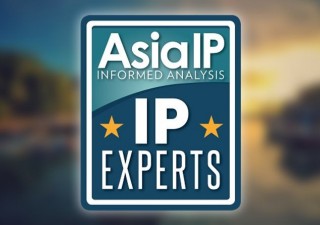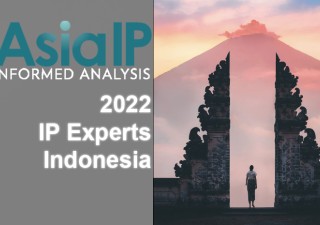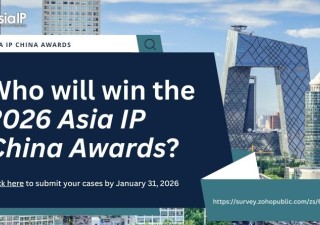The King of Fighters: Interviews with IP Week Speakers
14 November 2018

Asians are not only getting rich with IP but with martial arts content as well. Chatri Sityodtong, founder and chief executive officer of ONE Championship, the world’s largest martial arts organization, talks about ONE’s IP management and future.
Asia IP: As intangible assets are now key for the survival and success of any enterprise, how does ONE Championship protect its content as online infringement is still severe in Asia?
Chatri Sityodtong: One of the biggest developments that we have come up with is that we have moved away from the pay-per-view model and now bring our live content to viewers absolutely free in a number of ways. Anyone in the world with a smartphone can download the ONE Super App, which gives viewers access to our digital content in their hands. We also offer our content through partners such as Facebook and Twitter, and our worldwide affiliate TV networks. By offering our content to everyone for free, we have completely changed the way people consume martial arts. Our goal is to weave martial arts into the very fabric of society and we get closer to achieving that every day.
AIP: When online infringement is detected, are local internet service providers cooperative with you to locate the infringers? What would you do otherwise?
CS: We have a very strong web team that handles these matters. They work around the clock making sure that we offer our fans a premium viewing experience where they can witness worldclass martial arts action. We have systems in place to handle infringement and we do work closely with ISPs to ensure we have everything under control.
AIP: As virtual reality or augmented reality is gaining traction nowadays, will it be applied to any of your future fights?
CS: VR is blossoming but, while impressive, it is still in its infancy. At the moment, we have not looked into VR or AR but of course, in our line of work delivering a unique experience to fans, anything is possible. We will go into various digital spaces at the proper times. Right now, we are focused on our worldclass online viewing experience through the ONE Super App and other avenues of viewing our digital content.
AIP: Your website states that “our dream is to unite the 4.4 billion people in Asia and to celebrate our continent’s greatest cultural treasure together in harmony.” You seem to have achieved that being the top sports media property in the east, so are you conquering the west next or doing unconventional things such as broadcasting e-sports?
CS: We remain committed to developing martial arts as a whole in Asia, where we have very strong roots. Our goal is to weave martial arts into the very fabric of society in Asia. It’s gotten very big over the past few years but we’re only just beginning to scratch the surface of what is possible. eSports is always a possibility and the thought of having a ONE Championship video game is very exciting, but right now we’re completely focused on building our brand in Asia and telling the incredible stories of our ONE athletes.
AIP: While the WWE has produced iconic fighters such as The Rock and John Cena, do you think that we can also have our own action heroes in Asia?
CS: We are committed to building martial arts superheroes and we already have incredible stars such as ONE Women’s Atomweight World Champion Angela Lee, the Philippines’ Eduard Folayang and “The Burmese Python” Aung La N Sang of Myanmar, to name a few. It’s just a matter of time before we have that true breakout star that will transcend sports and entertainment. As martial arts continue to explode in popularity in Asia, stars will be born and ONE Championship will be at the forefront of the martial arts revolution.
AIP: Compared with sports such as basketball and football, martial arts are still perceived by some as violent. What can you and governments do to increase positive awareness?
CS: Since we first started in 2011, our goal has been to promote the true values of martial arts – integrity, humility, honour, respect, courage, discipline and compassion. We want to show the world through education and our athletes that martial arts are not violence and ONE Championship is different from other martial arts organizations. We represent everything good about martial arts and the impact it has on human life. By telling the stories of the lives of our amazing athletes, many of whom have had to overcome adversity, extreme poverty and hardship, we can ignite passion and hope in the world. We can inspire the people watching at home and feature martial arts as the driving force behind positive change.
Saving Cancer Patients
Many find out they have cancer only after it is too late. What if cancer tests were simple and not painful? Would that encourage more people to check up earlier to prevent unnecessary deaths? Min-Han Tan, CEO and medical director of Lucence Diagnostics, has just launched a new cancer detection method with only one draw of blood.
Asia IP: Where did Lucence Diagnostics get the idea to provide rapid, cost effective and accurate cancer blood tests with just one draw of blood?
Han-Han Tan: Lucence Diagnostics is a genomic medicine company that wants to change the way cancer is detected and treated with our liquid biopsy tests.
The idea to deliver a simple blood test for cancer diagnosis goes back to 2005 when I was working as an oncologist at the National Cancer Centre Singapore and there I witnessed the suffering that late stage cancer patients went through.
Conventional tissue biopsy requires surgical removal of tissue from the body and can take up to a week to analyze. Tissue biopsy is usually done once and cannot be used to track the patient’s cancer progression or treatment response. The quality and amount of tissue material may also be inadequate for full testing. Some patients are also physically not suitable for invasive procedures. I saw first-hand the need for better cancer diagnostics to save lives earlier.
This led me to develop a liquid biopsy technology that can diagnose cancer rapidly, accurately and non-invasively with just a single draw of blood. We have a range of blood tests for cancer screening and tumor treatment. Our tests can help doctors detect cancer earlier and monitor treatment response since a blood test is easy to administer. Our blood tests also help select targeted therapy for late stage cancer patients based on profiling patients.
AIP: What kinds of IP difficulties when developing the service? Are there many patent acquisition and licensing issues?
HT: The technology behind Lucence came out of the research I did at [the Agency for Science, Technology and Research (A*STAR)], where I led the Laboratory of Systems Medicine from 2011 to 2017. Lucence acquired the patents and know-how that my lab developed at A*STAR – this is important for a technology company.
Lucence has grown rapidly since the company was established in March 2016. Our cancer blood tests are used by physicians regionally. We have offices in Hong Kong and San Francisco, and a regional presence in ASEAN through our local partners.
Innovation will continue to drive the growth of our business which is why Lucence has also developed its own technology and are filing patents in more markets as we expand. We see the role of IPOS as an important one to help companies build and scale up IP.
AIP: What is the test’s error rate? If one draw of blood is tested cancer positive, would you draw another to verify?
HT: All our tests are stringently validated to the highest standards, and we participate in external quality assessments to ensure that our tests meet industry benchmarks. We have achieved toptier performance for our tests by international external quality assessment organizations such as the Quality Control for Molecular Diagnostics, and the European Molecular Genetics Quality Network.
AIP: Will any other conditions such as obesity and anorexia affect blood quality and hence the result?
HT: Test results can be affected for patients that have undergone blood transfusion or bone marrow transplant within two weeks. But the test can be taken two weeks after.
AIP: Your website states that “our experience with Asian cancers makes Lucence the preferred genetic testing partner in Asia.” What are the typical Asian cancers and why is there such phenomenon?
HT: According to the International Agency for Research on Cancer, nearly half of all cancer cases and most cancer deaths in the world this year will occur in Asia. One of the reasons is because some cancers with higher death rates are more common in Asia. The agency also cited that there is extraordinary diversity in the types of cancer and patterns of illness around the world. It is therefore important for us to tailor our tests to prevent and treat cancers in different parts of the world. Our tests can target common cancers in the world such as breast, colon and lung, as well as cancers that are more common in Asia like nasopharyngeal cancer. This cancer is common among men aged 40 and above in Southeast Asia and South China, with the highest global incidence in Singapore and Malaysia. We have developed a test that can screen for early stage nasopharyngeal cancer before symptoms appear.
AIP: Will the test be more accurate for Asians then? What if an American expatriate in Singapore wants to do it?
HT: Our tests are suitable for all races. We target the most common cancers in Asia, including breast, colon, lung, liver and nasopharyngeal cancer. Many of these are not exclusive to Asians. This helps improve cancer diagnosis and treatment selection of patients in the region.
AIP: How often should people do the test?
HT: Our blood tests can be repeated to monitor treatment response and cancer recurrence. This provides real-time information on how the treatment is progressing since cancer mutates rapidly.
AIP: What is the pricing for the test?
HT: Our test price ranges from the low hundreds to several thousand dollars depending on the requirement. A good evaluation is key to selecting cancer therapies, to achieve good outcomes and avoid futile approaches.
AIP: Are you developing tests on other illnesses other than cancer next?
HT: Our tests focus on cancer, and their related mutations and viruses such as the Epstein Barr virus and hepatitis virus. Our goal is to enable liquid biopsy as leading platform for true noninvasive monitoring of health.






